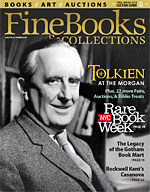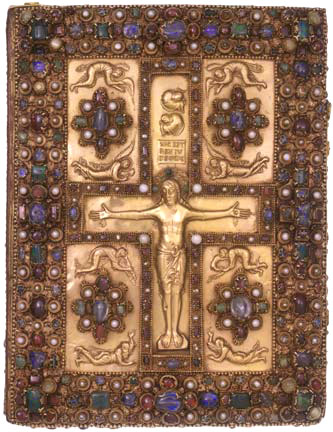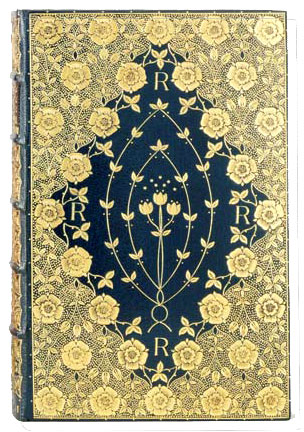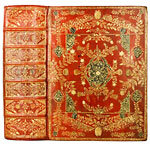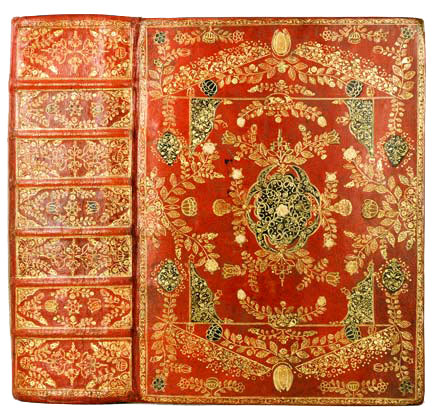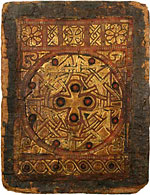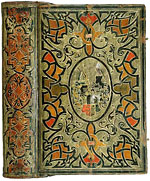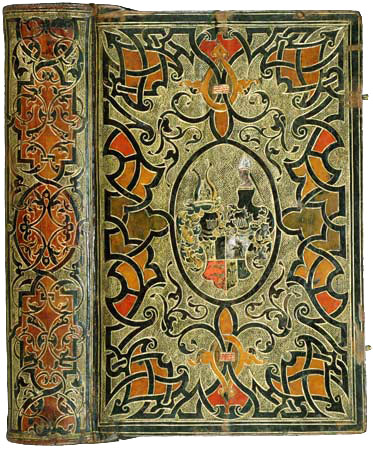Double Bind
For the Morgan’s Bindings Curator, Small Wasn’t Beautiful

Giacometti once said he didn’t mean to make small sculptures. He said he started out trying to make big sculptures, but they just kept getting smaller and smaller on him.
George Fletcher, who retired last September from his post as director of special collections at the New York Public Library, had the opposite experience. Asked to guest curate a show of bindings that would represent the holdings at the Morgan Library, Fletcher’s eyes just kept getting bigger. He knew all too well the quantity and substance of the Morgan’s collection. Before moving to the New York Public Library, he himself had been the Morgan’s curator of printed books and bindings. Just as J. P. Morgan had set his voracious sights on as many bindings as he could find, as early as 1899; and subsequent directors of the library, starting with Morgan’s son, Jack, had ferociously expanded the library’s holdings, so Fletcher couldn’t imagine playing favorites among the thousand-plus bindings to draw from. But Morgan director William Griswold, more minimalist by temperament and experience, said he had to choose.
So, starting last summer, Fletcher said in a recent phone interview, “I went plowing through.”
Painfully, he winnowed the field to several hundred candidates.
No, said Bill Griswold. Smaller.
Fletcher tore his hair, or what was left of it, and finally announced that he guessed he could boil it down to 85.
Griswold said it had to be 55.
As he recalled, Fletcher was flummoxed. “But that’s going to be nothing but a group of Wows!” he exclaimed to Griswold.
And so it is.
Many of the pieces now on display at the Morgan are what Fletcher dryly calls “the warhorses,” pieces of such unquestionable value and beauty that they must be shown. Among these are the Morgan’s Coptic bindings, the High Middle Ages treasure bindings (previously shown at the Metropolitan Museum), and some pieces from the Late Middle Ages, including a chain binding. (“You never see these unless you visit Hereford Cathedral,” Fletcher observes.) Fletcher said he could only touch upon the Morgan’s 18th-, 19th- and 20th-century bindings collection, centuries when the French aesthetic set the tone. And Paul Bonet’s 1959 binding (of Cirque, by André Suarès) which Fletcher describes as “a huge thing—so big you could put legs on it”—had to serve as “the figurehead for the whole of the 20th century.”
But Fletcher did manage to exercise some curatorial discretion by including one of his own favorite bindings, a silver and gold deco piece made by René Kieffer (1875-1963) in 1922. “It looks like the top of the Chrysler building,” Fletcher said, adding: “His designs were extraordinary. Novel. Kieffer set the tone for decades.”
Fletcher, who could not resist writing up entries for twice the number of pieces than are on display, says he’s reconciled to the size of the show, which fits neatly into one of the Morgan’s new exhibition galleries. “It was both thrilling and like committing murder,” he said. But he’d like to follow up with a more focused show.
He could see a couple of focused shows.
In fact, three or four shows….
“Protecting the Word: Bookbindings of the Morgan” is on display through March 29, 2009. See: www.themorgan.org


